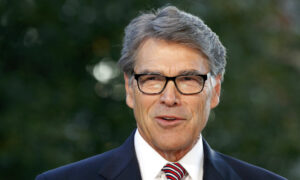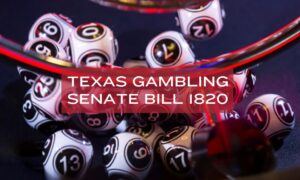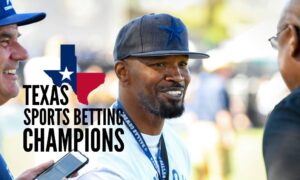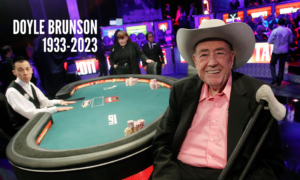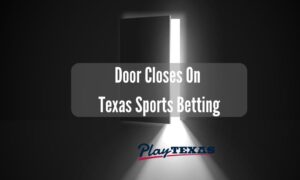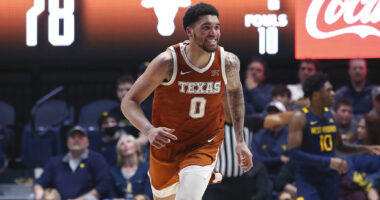
Mike Slive, who served as the commissioner of the SEC (2002-2015), coordinator of the BCS (2006, 2007), and Men’s Division I Basketball Committee chair (2007), testified to the following during legal hearings on the amateur status of NCAA athletes:
“[Amateurism] is just a concept that I don’t even know what it means.”
He said it again a little later: “You know, the term amateur I’ve never been clear on what is meant by amateurism[.]”
Slive passed away in 2018, but he sat through the first wave of the legal proceedings, chiseling away at one of the NCAA’s three pillars of identity: “satisfactory standards of scholarship, sportsmanship and amateurism”
The NCAA has always held that it doesn’t pay its players because they are amateurs — student-athletes, not athlete students. The NCAA’s highly-competitive sporting landscape succeeds because it is free from the distractions of money thrown at pro players through contracts and endorsement deals.
In this sense, it is purer than professional sports. College basketball players dive for balls, they make the extra pass, they take charges and they play full-court defense. All of these are hallmarks of the amateur spirit, the spirit of “team first.”
The NCAA thrives on this perspective: pure amateur athletes coming together to forge the team. But if the college player is an idealized symbol of this spirit, the NCAA, over the last 30+ years, has drained that symbol of its substance.
NCAA income expansion in the last 30 years
In 1985, Division I football and basketball raised $944 million and $41 million, respectively. And CBS paid $16 million to cover the March Madness tournament.
In 2016, Division I football and basketball raised $13.5 billion, and television rights to March Madness brought in $1.1 billion. The extravagant facilities at the top schools in the country reflect this exponential revenue growth. And in massive coaching salaries, especially for Power Five coaches.
However, when it comes to compensating the athletes, that revenue stream dries up. Currently, schools apply 29% of women’s basketball revenue to athletic scholarships for female athletes. The number is 8.9% for men’s basketball, and 8.1% for men’s football.
In any other industry in the US, this compensation structure for athletes would be considered, to quote Supreme Court Justice Brett Kavanaugh, “flatly illegal,” a violation of the Sherman Antitrust Act.
Again, the NCAA’s defense: we do not pay our players because they are amateurs. They are, however, amateurs who bring billions of dollars to the schools, conferences and the NCAA on the backs of their play.
The other factor to consider in all of this is sports betting. Legalized sports betting in Texas could be massive, but how would it impact college athletics and athletes?
Legal battles over athlete compensation
Ed O’Bannon, a key member of UCLA’s 1995 National Championship team, brought the first major suit against the NCAA. He contended that companies compensate players for the use of their name, image, or likeness.
His claim stemmed from seeing a likeness of himself in the EA Sports video game NCAA Basketball ‘09. In O’Bannon v. NCAA (2014) the court ultimately ruled in his favor, establishing higher value athletic scholarships and a trust to be established for players based on years of eligibility.
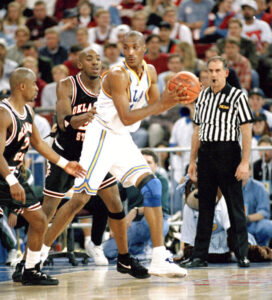
Then in 2021, in Alston v. NCAA, the Supreme Court unanimously extended the ruling of O’Bannon v. NCAA by removing restrictions on education-related scholarships for student-athletes.
It is a relatively small shift in the amount of revenue directed towards student-athletes. But the decision represents a harbinger of the changes that have continued to chisel away at the NCAA’s “amateur” label.
The Wild West of NILs
Since Alston v. NCAA, the NCAA has seen a jump in the number of student-athletes signing name, image, or likeness (NIL) deals. These kinds of deals allow the companies involved to pay athletes directly. It’s one way the NCAA is trying to work around compensating their athletes.
After a year of relatively wide-open NIL allowances for their athletes, Division I schools are reassessing their NIL policies. There is a wild west feel about the current landscape, as students are making business deals with no real support.
Sometimes students have deals brokered by schools and boosters. And, in some cases, may have their recruitment offers defined by NIL opportunities.
While this provides a sizable income boost to high-profile athletes, poignant negative consequences await students wading into the world of NIL deals. Leaving students to pursue this avenue as a means to compensate for what the NCAA has denied them, is a consolation.
However, it is one that could do more harm than good.
Black athletes disproportionately disadvantaged by amateurism
In March 2022, the National Collegiate Players Association (NCPA) fired the latest salvo against the NCAA. The NCPA, along with the Department of Education, filed a Human Rights complaint on behalf of Black athletes.
Their argument looks at the fact that Black athletes are predominantly involved in the most high-profile, high-earning collegiate sports in the country: women’s basketball, men’s basketball, and men’s football. Their complaint estimates an athlete is denied the following amount every year:
- Women’s Division I Basketball: $24,000
- Men’s Division I Basketball: $164,000
- Men’s Division I Football: $185,000
These numbers are based on a fair market assessment of what employees make in industries where they generate the amount of income for their business as do college athletes.
The alarming truth of this finding is that the NCAA’s principle of amateurism most significantly disadvantages Black athletes in particular.
NCAA hiding behind amateurism
In numerous court cases where the NCAA’s athlete compensation was at issue, the courts found that the NCAA “nowhere defines the amateurism they claim consumers insist upon.”
At the Supreme Court level, Justice Neil Gorsuch stated this sentiment in his opinion on the case of Alston V. NCAA (2021) when he identified that the NCAA’s definition of amateurism “has changed steadily over the years.”
Despite the shifting nature of this term, it is the one shield the NCAA still uses to justify its business practices. These practices have resulted in:
- Exponential revenue increases for collegiate sports over the past 30 years
- The global influence of NCAA sports
- The salary inflation of coaches and administrators at the top schools
- World-class facilities at most major Division I universities
All of these shifts are commensurate with the expansion of the NCAA’s product and the massive income generated by collegiate sports.
All except one: the amateur athlete. That idealized, proletarian symbol of what we all want collegiate sports to be about. It’s about the game, hard work, team play, and definitely not about the money.

